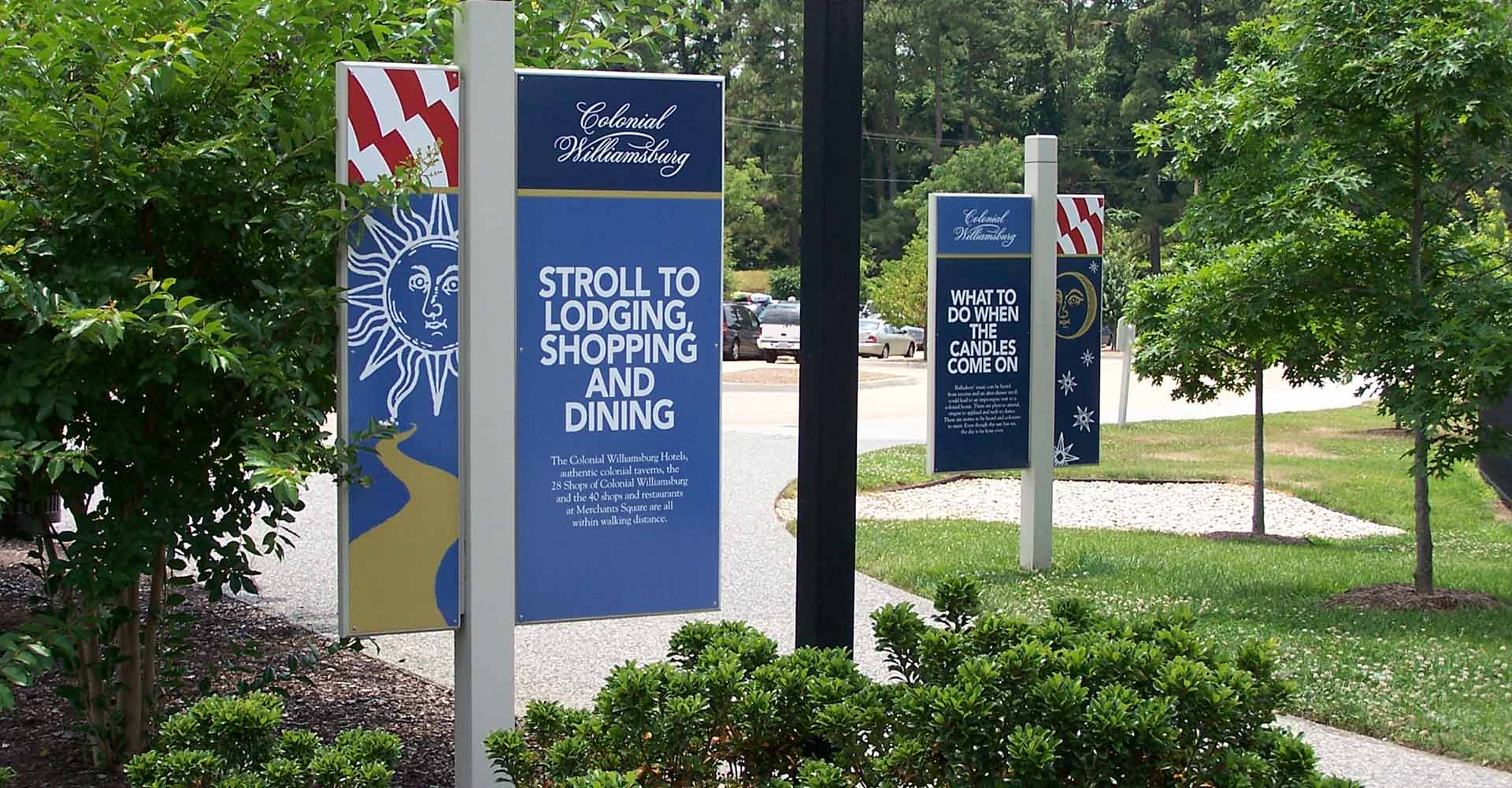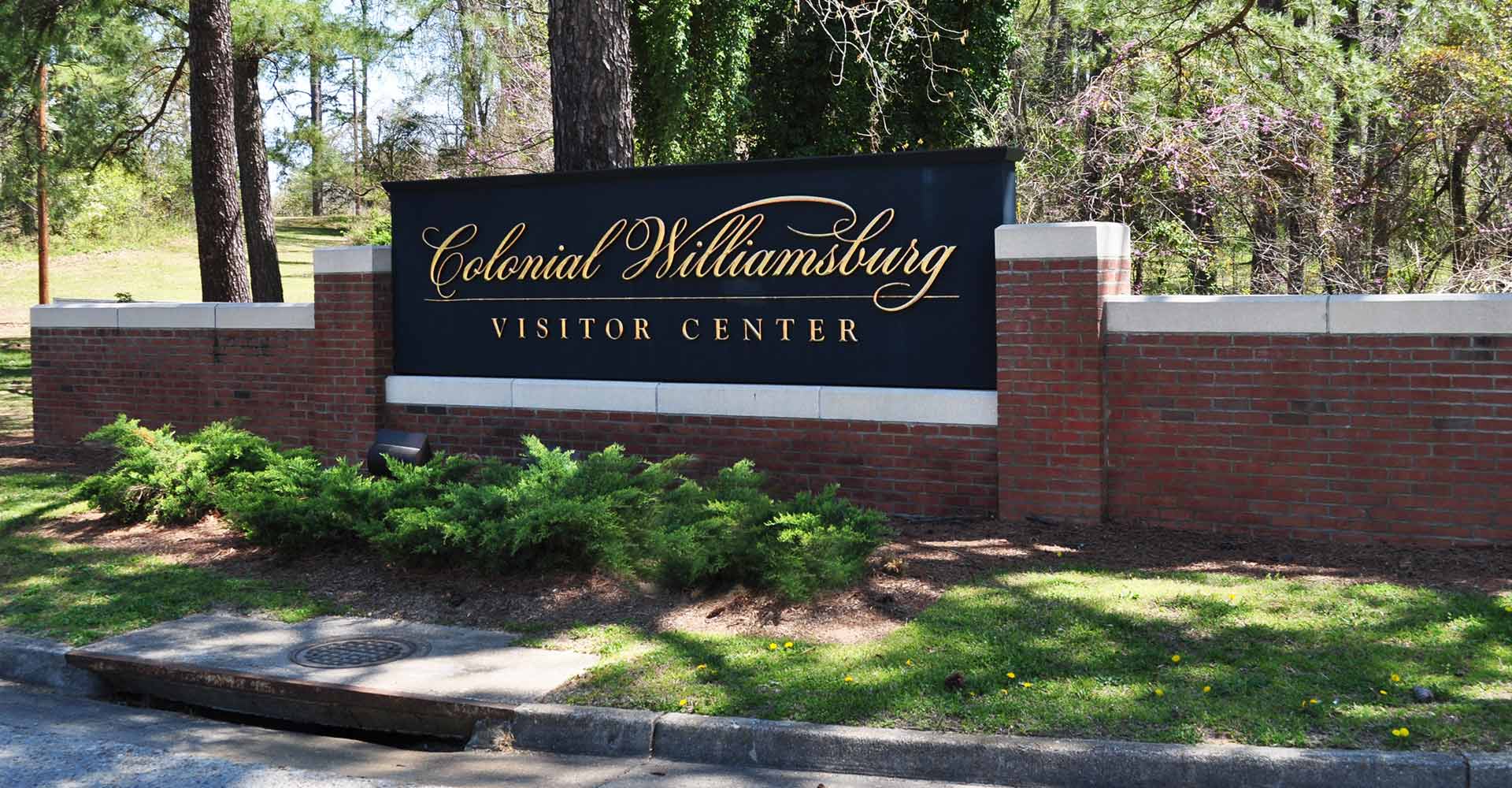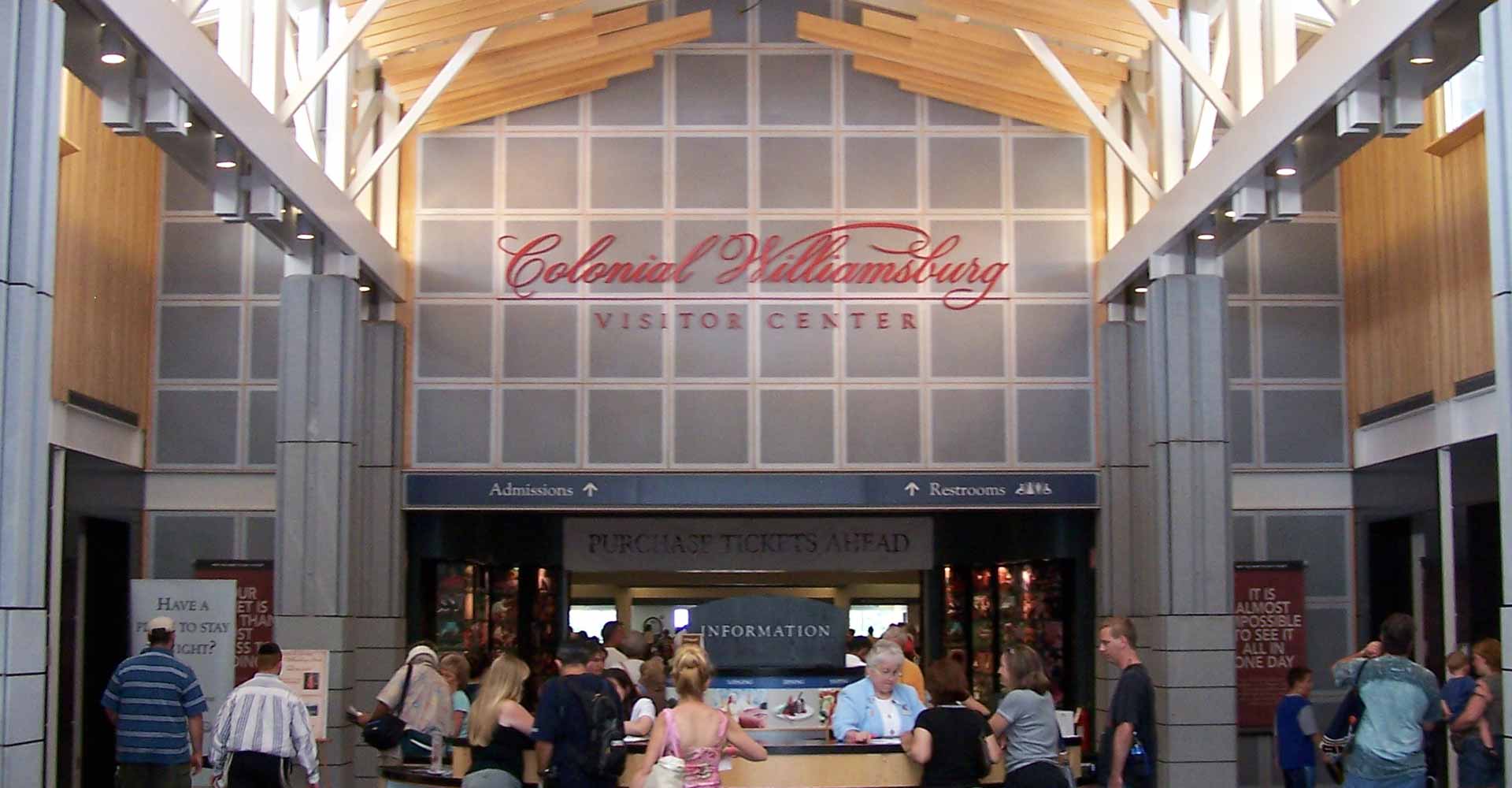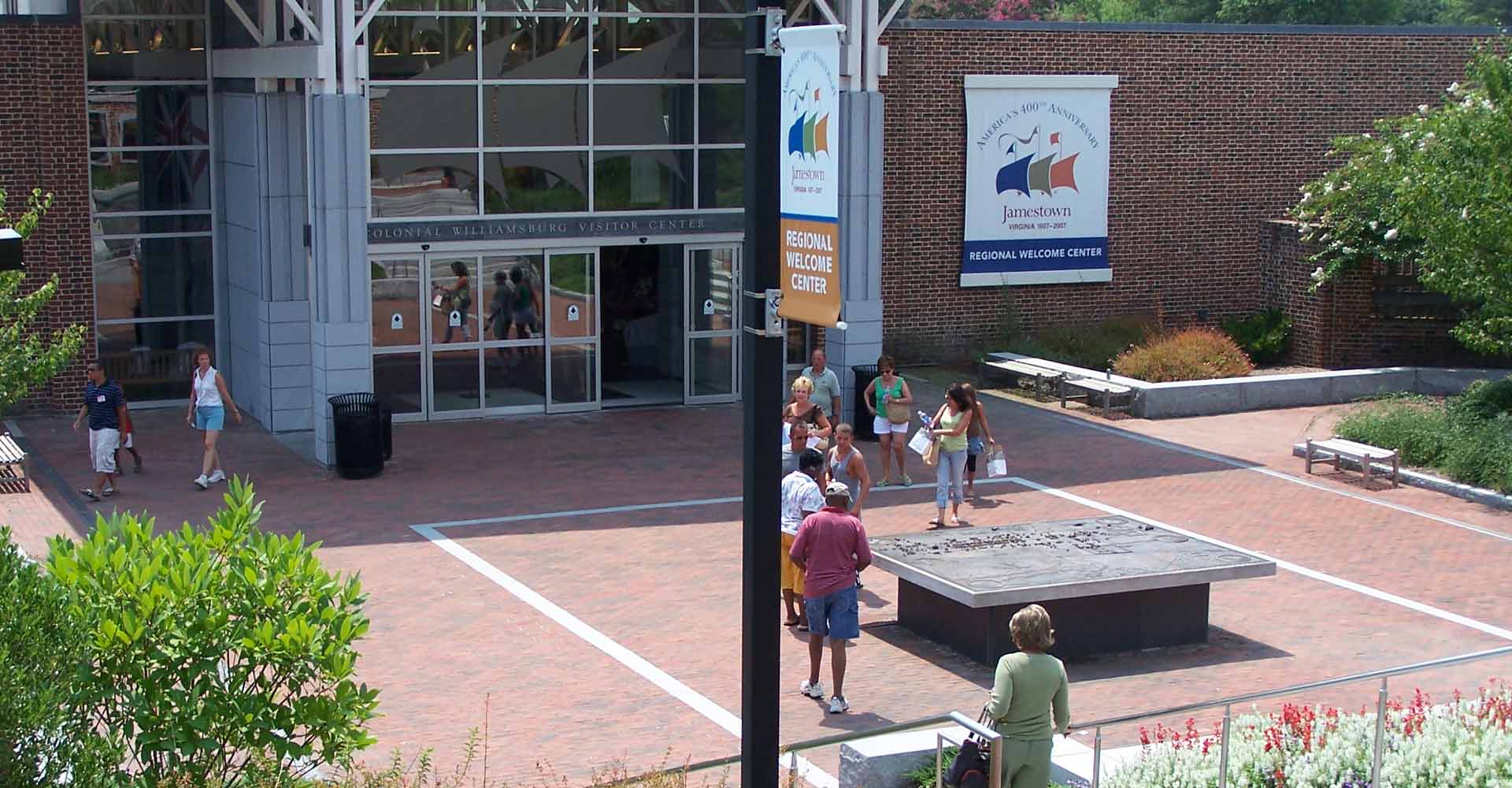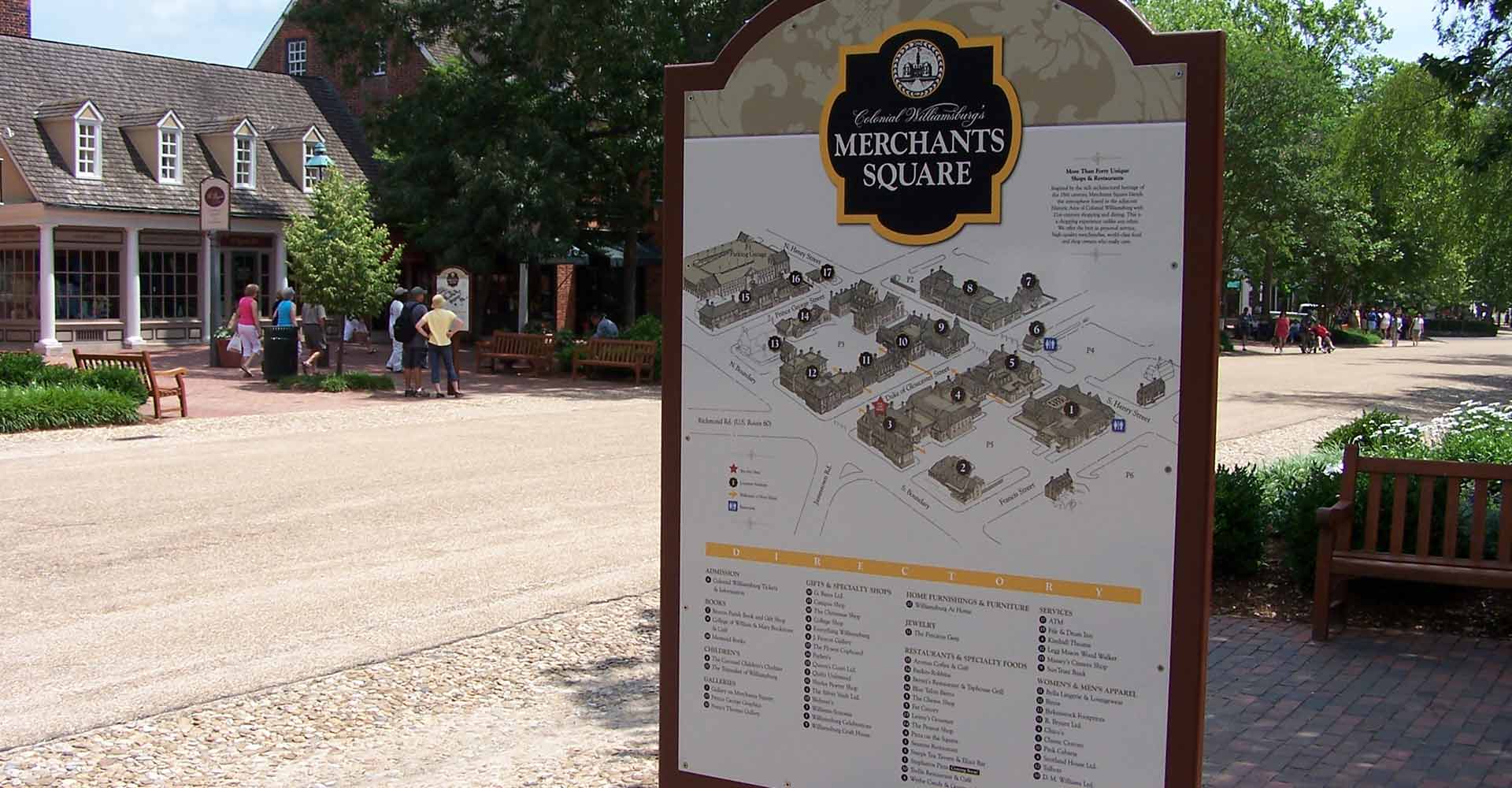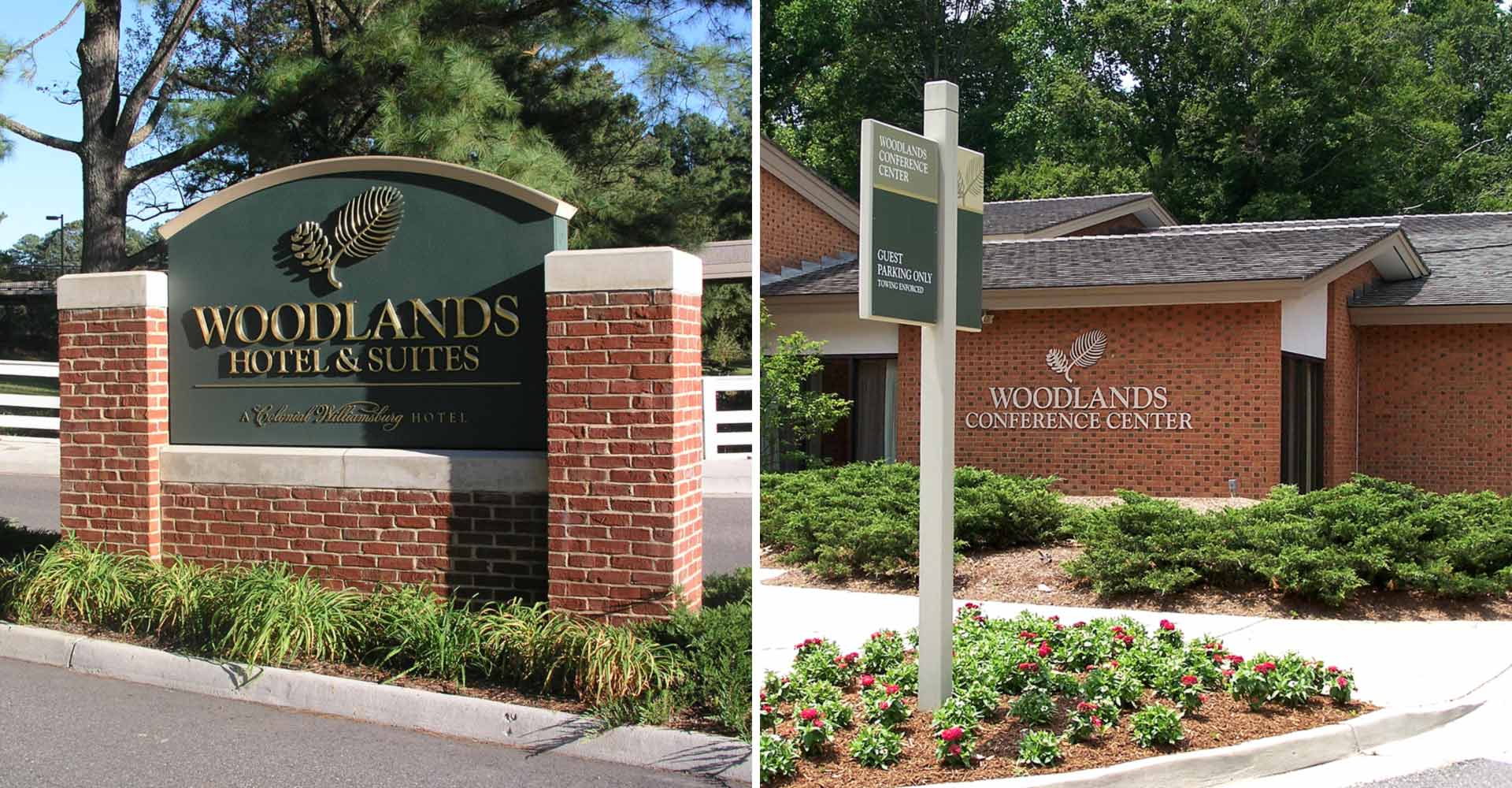Colonial Williamsburg Foundation
Williamsburg, Virginia
The Colonial Williamsburg Foundation operates the world's largest living history museum — the restored 18th‐century capital of Britain's largest, wealthiest, and most populous outpost of empire in the New World. In Colonial Williamsburg's 301‐acre Historic Area stand hundreds of restored, reconstructed, and historically furnished buildings. For more information, visit www.history.org.
The Colonial Williamsburg Foundation began extensive, multi‐year construction renovation projects in 2000 to enhance the original 1957 Visitor Center complex and two of their five hotels. The projects comprised the largest undertaking of its kind in Colonial Williamsburg's history and is among the largest capital investments ever made in the Virginia Tidewater region. 1717 was commissioned to design comprehensive vehicular and pedestrian wayfinding signage systems for the reconfigured campus to move visitors from the highway, to the parking lots, to the Visitor Center as efficiently as possible. Orientation and information kiosks were strategically located to assist first‐time visitors. Several hundred custom regulatory and traffic signs were carefully integrated into the landscaped grounds. Project colors, materials, and graphics create a cohesive brand for the entire campus. Complementary exterior and interior signage systems for the Visitor Center, Woodlands Hotel, Woodlands Conference Center, Group Arrivals Building, and HUZZAH! — Colonial Williamsburg's new family restaurant — help to create a visitor‐friendly experience.
In 2015, the Guest Experience Team selected 1717 to assist them initiate a collaborative Foundation project to execute a comprehensive signage and wayfinding audit and improvement plan that will provide a cohesive orientation and wayfinding system, which for the first time, will integrate the Historic Area with the Visitor Center Campus. An essential element in the re-imagining of Colonial Williamsburg is to evaluate and improve the overall guest experience. The challenge being to balance this essential need for easily perceived signage components in the landscape with the significant investments Colonial Williamsburg Foundation has made over the years in creating and maintaining an immersive historic environment. The 87-page illustrated report deals with 5 distinct guest experiences from pre-visit wayfinding messages to navigating the Historic Area.
In 2016, 1717 designed and administered the first two signage recommendations. The Foundation has a long history of printing a daily guide similar to the current Map & Program Guide that is given to ticketed guests. This hand-held map has always been the primary device for wayfinding in the Historic Area. Unfortunately, the map relies on guests knowing what street they are standing on and which direction they are facing. The project stakeholders indicated that a large number of users have a difficult time reading street maps and consequently are constantly flipping the CW guide map around in an often unsuccessful attempt to align it with the direction they think they were facing. To compound the problem, many of the original street signs at primary intersections were missing altogether and the ones that did exist where too small to read easily, particularly across the 100-foot-wide Duke of Gloucester intersections. 1717 recommended a replacement program for the 28 traditional post-mounted street signs with more legible graphics and sustainable sign materials and finishes. This program was supplemented with the implementation of 91 new bluestone street sign plaques (one at each corner of every intersection) embedded in the brick sidewalks containing north/south and east/west compass points flanking the street name. In addition to making sure guests can find the street names at each corner of each intersection, these signs will also help guest align the compass on their street map with the cardinal directions engraved on the plaques.
Also see the Colonial Williamsburg Visitor Center, Williamsburg Inn and Griffin Hotel brands, and museum posters designed by 1717.









